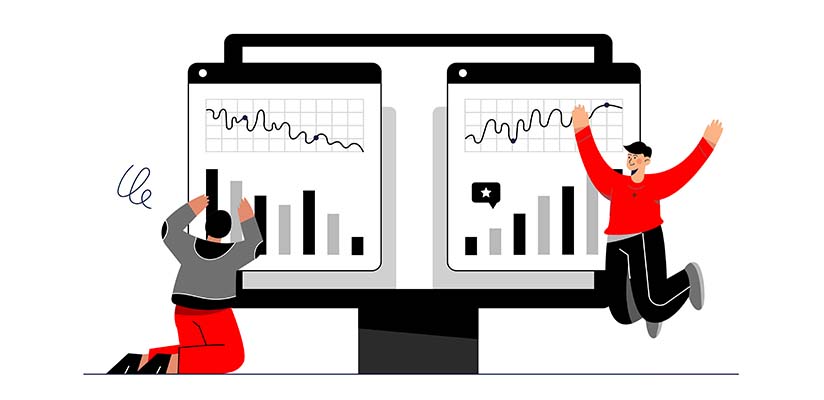
As of 2021, core web vitals have been a hot topic in the SEO community. And it’s for a good cause, improving the user experience, which is why Google has been taking the friendliness of websites for mobile users seriously. It considers it one of the key factors for ranking a website on the Google search results page. To pass the Google core web vitals test, you have to pass the core web vitals assessment and need to at least score well for all the categories of Google core web vitals. But what are core web vitals? What is core web vitals in SEO?
In this article, we would like to talk about Google core web vitals and improve the core web vitals of your website to get the score needed from the Google core web vitals test. Buy a fast web hosting can be so helpful to improve your website Google core web vitals.
What Are Core Web Vitals?
Core web vitals consist of three specific categories or metrics: Google will test and analyze your website for user experience. In recent years, HTTP protocol, mobile responsiveness, data-protected browsing, and page experience have been the major factors for ranking a website higher and better on the Google search results page.
Generally speaking, Google core web vitals consists of Largest Contentful Pain, First Input Delay, and Cumulative Layout Shift. In simpler words, loading, interactivity, and visual stability. But what are they? And how to improve core web vitals to score better in Google?
Before we get into that, let’s explain what the three metrics that Google uses individually are.
Largest Contentful Paint – LCP
LCP or Largest Contentful Paint is a Google core web vital that calculates the time in seconds from the start of where a page is being loaded to when it is fully loaded and displaying are the information, images, and elements on the screen for users to interact with.
As you probably may have guessed already, the lower the LCP, the better your score from Google. Google measures LCP as soon as the user starts interacting with the page. For example, scrolling, switching tabs, closing the tab, clicking on a call-to-action, etc.
First Input Delay – FID
FID or First Input Delay is the second metric of Google core web vitals. It calculates the time in milliseconds from when the user starts interacting with your site when the browser or website can respond to its request. In other words, it’s a metric that measures the site’s responsiveness as well as interactivity. You may have seen Total Blocking Time in tools such as GTMetrix and Google Insights. That is the measurement of FID.
Cumulative Layout Shift – CLS
Cumulative Layout Shift is the final measurement that Google uses in a core web vital test. If you are a web designer or developer, you would know that visual stability is crucial. For Google, CLS is significant; One of the key factors in ranking websites heavily influences the user experience.
Unlike other core web vitals, Cumulative Layout Shift isn’t measured in seconds. It is measured from the viewport size, which is connected to various elements responsible for moving two or more elements. CLS is scored from zero to any positive number. If your website gets CLS to a zero score, it has no page shifting, and the more score you get, the more page shifting you have on the website, which is an imperfect measurement.
So, how can you improve your core web vitals?
How to Improve Core Web Vitals?

Let’s talk about the measurements. If your LCP scores 2.5 seconds or less, it has received a Good score acceptable by Google; 2.5 seconds to 4 seconds means it needs improvement. Anything more than 4 seconds means you’ve received a poor score, and you should entirely focus on improving the LCP. There are many reasons why you may get a poor LCP score. One of the essential factors is the server response time and render-blocking, CSS, and JavaScript.
To improve your LCP score, you can start by optimizing your images, CSS, etc. The article would be way too technical to talk about every single method to optimize your website. For core web vitals of WordPress, you can download and install a plugin that would take care of optimizing your website from 0 to 100. Also, a reliable web hosting provider helps you to improve your website SEO and enhance your brand visibility.
As mentioned above, FID is measured by milliseconds. You would get good if your website scores 100 ms or less. Between 100 ms to 300 ms means you need improvement, and anything above 300 ms means poor. You would usually get a poor score because the browser cannot execute JavaScript code. So to improve your FID score, you must reduce the JavaScript execution time, reduce the third-party code, and minimize the work processed in the main thread.
How to Measure Core Web Vitals?
A few tools and even core web vitals chrome extension can be used to analyze your website and see how well your website is doing. Measuring your core web vitals is very important as you will know how to improve them and rank better on the Google search results page.
As mentioned, there are a few tools that you can use to generate a core web vitals report—for example, Google PageSpeed Insights. PageSpeed Insights is a tool developed by Google itself and analyzes your website and suggests the changes that need to be done to improve your website.
Additionally, there is a Google tool for core web vitals reports. Much like Google PageSpeed Insights, it analyzes your website and gives you information based on the report.
Conclusion
This article talked about the core web vitals ranking factor that Google uses to measure a website’s performance. In recent years, core web vitals for SEO have been the number one hit in SEO community forums. Many SEO experts have been talking about core web vitals optimization and how it can improve a website’s ranking in Google.










Leave a Reply